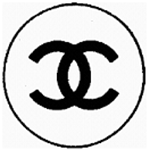A trade mark dispute between Chanel and Huawei involving a sideways view of Huawei’s "H" logo (pictured below) underlines the importance of protecting logos and other figurative marks in all relevant orientations.
The dispute – an "H" or a "c"?
Huawei had applied to the European Trade Mark Office to register its "H" logo for, among other things, computer software, smartglasses and smartwatches. Chanel opposed registration arguing, among other things, that if you turn the logo on its side – as you might on the side of smartglasses – it looked similar to Chanel’s famous double "c" logo[i].


The General Court’s take
Siding with Huawei, the EU’s second highest court held[ii] that when comparing marks for the purpose of registration they must be compared in the form in which they are – or are intended to be – registered, “irrespective of any possible rotation in their use on the market”. So the comparison must be made the right way up without considering the 90 degree rotation. In this case the Court held that, although they shared some characteristics, the marks were both visually and conceptually different, Chanel’s mark being the initials of Coco Chanel and Huawei’s a stylised letter H.
Consequences for trade mark owners
Based on this approach to comparison and similarity the question arises as to whether use by a third party of a mark in a different orientation could constitute infringement of that mark. This will, of course, depend on the circumstances, but simply turning a registered mark on its side or on its head will not avoid infringement if the marks still look similar despite the different orientation. As this case illustrates, however, trade mark owners can put themselves in a better position with regard to opposing conflicting marks and also potentially on infringement by registering their figurative marks in more than one orientation – had Chanel done this it might have succeeded in its opposition.
Brexit
The English courts are not obliged to follow this ruling of the General Court, but it is likely that they will take it into account.

 Tom Lingard
Tom Lingard